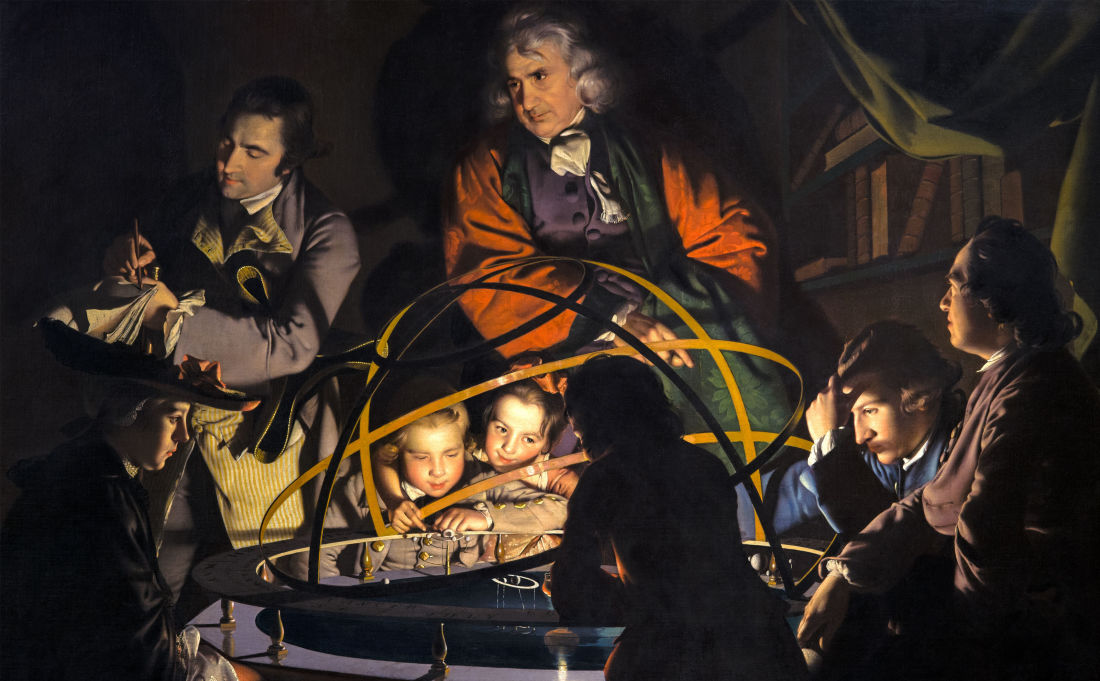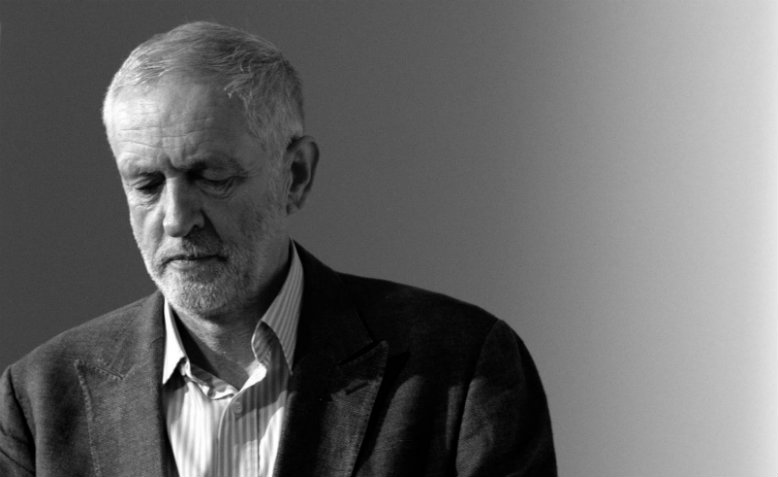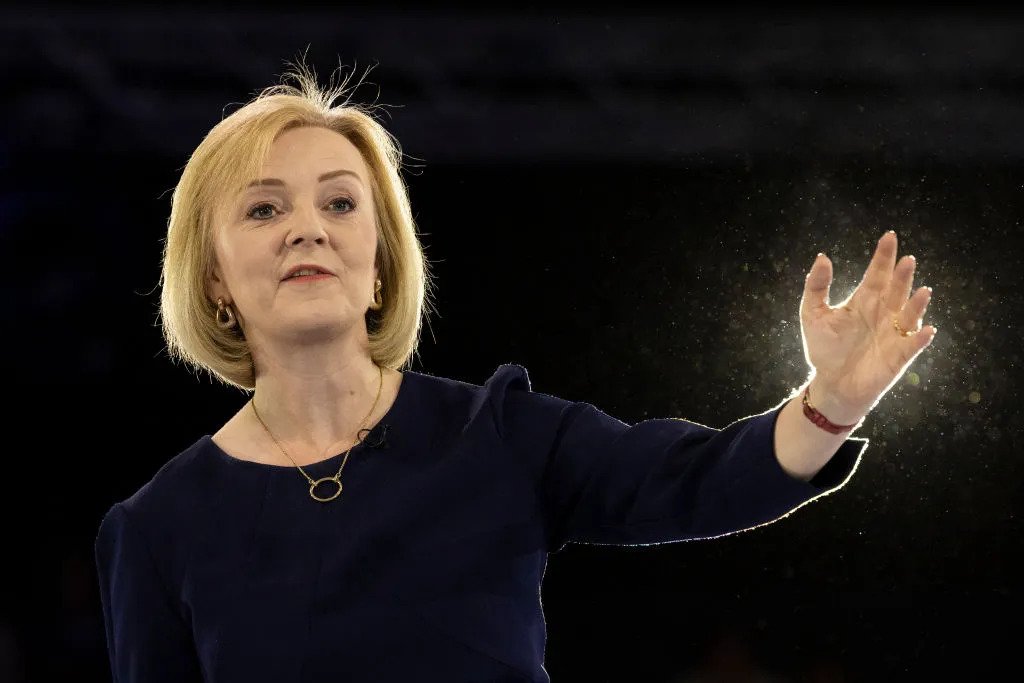Since becoming leader of the British Labour Party in April 2020, Keir Starmer has comprehensively marginalized the left-wing tendency associated with his predecessor Jeremy Corbyn. At every turn, Starmer has depicted his moves against the Labour left as an exercise in moral hygiene to cleanse the party of antisemitism. This was the argument he used to justify the sacking of Rebecca Long-Bailey, his main rival in the 2020 leadership election, from the Labour shadow cabinet. It remains the rationale for depriving Corbyn of the Labour whip in the House of Commons.
On the eve of the 2021 party conference, Starmer categorically denied that he was engaged in a factional campaign against the Labour left: ‘The battles we’ve had in the Labour Party in the last 18 months have pretty well all been about antisemitism . . . you can’t have a united Labour Party if you’ve got antisemitism there.’ In January 2022, his Shadow Chancellor Rachel Reeves told the Financial Times that she was delighted to know that at least 150,000 people had torn up their Labour membership cards since Starmer became leader. According to Reeves, this was a price well worth paying to efface the ‘stain’ of antisemitism.
In making these claims, Starmer, Reeves and their allies rely upon a lurid media narrative about the Corbyn years that cannot withstand a moment’s scrutiny. The key points of that narrative were as follows: after Corbyn became leader, there was a sudden and horrifying escalation in levels of antisemitism among the party membership, to the point that such prejudice became ubiquitous. Instead of trying to combat this alarming trend, Corbyn and his allies deliberately encouraged it, presumably motivated by their own anti-Jewish bigotry.
It became commonplace to describe Corbyn as a dangerous antisemitic rabble-rouser without any analogue in Europe since 1945. During the 2019 election campaign, opponents of his party claimed that a Labour government would precipitate the departure of British Jews from the country en masse. Looking back on the election a year later, Guardian columnist Rafael Behr suggested that anyone who campaigned for Labour in 2019 would probably have turned their Jewish neighbours over to the Gestapo under the Third Reich. Such rhetoric has been bog-standard in Britain’s liberal commentariat as its members seek to rationalize their hostility to Corbyn’s project.
In reality, there was no evidence that antisemitic attitudes were more widespread under Corbyn than under previous Labour leaders. Nor, for that matter, was there any evidence that such attitudes were more widespread in Labour than in the other main parties. What changed after 2015 was the degree of scrutiny, with marginal, unrepresentative cases held up in the national media as if they were typical of the Labour membership. As we shall see, the narrative also relied upon the elision of sympathy for Palestinians with hostility to Jews, in a way that US politicians such as Ilhan Omar and Rashida Tlaib would find wearingly familiar.
In July of this year, the barrister Martin Forde finally delivered a report on Labour’s organizational culture that Starmer had commissioned two years earlier. It demolished one of the central planks of the case against Corbyn. Forde addressed the claims made most prominently in a 2019 BBC documentary presented by John Ware, ‘Is Labour Antisemitic?’, which accused the Corbyn leadership of systematically thwarting efforts by the party’s disciplinary unit to expel members with antisemitic views. His report confirmed that this version of events was ‘wholly misleading’ and indeed the opposite of the truth.
Staff in the leader’s office only intervened in a small number of cases after an ‘enthusiastic invitation’ from officials in the disciplinary unit who ‘refused to proceed’ without their advice. According to Forde, the villains of John Ware’s documentary ‘responded to the requests, for the most part, reasonably and in good faith.’ Corbyn’s critics presented ‘Is Labour Antisemitic?’ as a modern-day version of Bob Woodward and Carl Bernstein’s reporting on the Watergate scandal. To judge by the contents of Forde’s report, we should picture instead the Washington Post publishing an unexpurgated version of Richard Nixon’s enemies list on its front page as if it were the work of a courageous whistle-blower at the highest levels of government.
Yet the British commentariat has buried the findings of the report, just as it buried every previous rebuttal of a propaganda campaign that set new standards for mendacity in British public life. This is primarily a function of the power imbalance shaping this discursive field: the Conservative Party, the Labour right, and their respective media allies are determined to uphold these fictions about what happened under Corbyn’s leadership, and the megaphone they collectively possess can drown out dissenting voices. However, there is a subjective factor that we must also take into account. At leadership level, a significant part of the Labour left made a conscious decision not to challenge the false narrative that was gradually constructed from 2015 onwards.
Instead of enabling them to defuse the controversy and move on to other subjects, as they hoped it would, this approach merely encouraged their opponents to launch wave after wave of attacks. The best starting point for a retrospective evaluation is the summer of 2018, when Corbyn and his allies came under intense fire for their reluctance to adopt the International Holocaust Remembrance Alliance (IHRA) definition of antisemitism with its full, unamended list of examples.
Two of the insider accounts to have appeared after the 2019 election defeat – This Land by Owen Jones and Left Out by Gabriel Pogrund and Patrick Maguire – channel the perspective of those who believe that this controversy could easily have been avoided. In their opinion, the party leadership should have adopted the full IHRA text from the very start; failing that, it should have caved in as soon as the controversy erupted instead of trying to hold the line around an alternative definition of antisemitism. The books attribute this view to figures such as Andrew Fisher, chief author of the 2017 Labour manifesto, and above all Corbyn’s Shadow Chancellor John McDonnell, while Jones himself is very much in agreement with their thinking.
The problem with this line of argument is easy to identify. Instead of examining the IHRA controversy in its own right to determine what might have been an effective response, it starts from the assumption that there must have been a compromise available, so long as the will to compromise was there. Needless to say, the political field is littered with the corpses of those who were only too anxious to retreat under fire. Genuine pragmatism demands that you recognize when your opponents have no interest in compromise and will not halt their offensive no matter how much ground you concede.
The Corbyn leadership did not have the option of defusing the antisemitism controversy by making a concession to its critics at any point between 2015 and 2019, because it was never simply an empirical debate about the prevalence of antisemitism in the Labour Party, or the steps that should be taken by its leaders in response. That kind of discussion requires a shared understanding of what constitutes antisemitism, which is precisely what was lacking.
Corbyn’s most strident and influential critics, from Marie van der Zyl, president of the Board of Deputies of British Jews (BOD), to Stephen Pollard, editor of the Jewish Chronicle, all relied upon the concept of the ‘new antisemitism’, according to which the dominant contemporary form of antisemitism expresses itself through attitudes to Israel. The IHRA definition has become a totem for those who want to impose this understanding as a rigid orthodoxy. Several of the examples attached to it link certain forms of speech about Israel with antisemitism, and the wording of those examples is sufficiently vague that they can be used – and have been used – to stigmatize any kind of meaningful solidarity with the Palestinian people.
If the Labour left had accepted the IHRA definition in toto from the start, its leaders would simply have delayed the cycle of controversy rather than avoiding it. With the definition in hand, their opponents would have begun excavating statements about Israel by prominent left-wing activists, from Corbyn down, and presenting them as violations of the party’s new code. Instead of denouncing the party leadership for their refusal to adopt the definition, they would have denounced them for not putting it into practice.
By the time Labour’s national executive agreed to pass the full definition in September 2018, it was no longer necessary to comb through past utterances for supposedly incriminating material, because figures like the Labour MP Margaret Hodge had already normalized the most extravagant and defamatory claims about Corbyn and his movement. It was Hodge who opened the floodgates with a carefully planned and pre-rehearsed tirade against her party leader in the House of Commons, explicitly branding him as an antisemite. Stephen Pollard and his associates followed this up with a statement denouncing Corbyn’s party as an ‘existential threat to Jewish life in Britain’, while Marie van der Zyl claimed that the Labour leadership had ‘declared war on the Jews’.
In Left Out, Pogrund and Maguire inadvertently drive home the absurdity of these claims when they attempt to translate them into the language of political rationality:
Some thought the rhetoric overheated. To many Jewish leaders, allowing Israel to be characterised as a racist project did pose existential questions. If a Labour government adopted the same position, could Jewish bodies with links to Israel lose their charitable status? Would the government continue to fund Jewish security charities which had links to the Israeli embassy? Could Britain become a cold home to its Jews, the vast majority of whom did support Israel’s existence?
This passage combines inaccuracy with illogicality. First of all, Labour was not proposing to adopt, as its collective view, the proposition that the Zionist state-building project was a ‘racist endeavour’ (a phrase which appears in one of the IHRA examples). It was being urged to adopt a definition of antisemitism that would prohibit any Labour members from articulating that view, on pain of expulsion from the party. One is left with the implication that if a single Palestinian member of the Labour Party was allowed to recall what happened to their family during the Nakba, it would set off a chain of events that might culminate in the demise of Britain’s Jewish communities – a preposterous idea, of course, but a convenient one for those who would rather not hear about the Nakba at all.
Secondly, even if Labour did adopt the critical and historically accurate understanding of Zionism spelled out, for example, by Rashid Khalidi in his book The Hundred Years’ War on Palestine, it would not oblige a Labour government to sever all ties with the present-day Israeli state, let alone with Jewish organizations in Britain. Labour’s 2019 manifesto pledged to block the sale of weapons ‘used in violation of the human rights of Palestinian civilians’, not to expel Israeli diplomats from the UK. In itself, a freeze on arms sales from a previously staunch ally of Israel would have represented a significant breach in the wall of complicity.
It is vertiginously implausible to suggest that a government which carried out such a policy, in the teeth of fierce opposition, would then want to provoke an entirely avoidable row by stripping the Community Security Trust (CST) of its status as a recognized charity. In any case, talk of Labour posing an ‘existential threat’ to British Jews conjured up – and was intended to conjure up – a far more alarming picture. Margaret Hodge sketched it out explicitly when she compared the token reprimand that she received from Labour’s disciplinary process for her tirade against Corbyn to the persecution of Jews in Nazi Germany.
Pogrund and Maguire have to perform such intellectual contortions to avoid stating the obvious: the claims that were made by Hodge, Pollard, van der Zyl and others during the summer of 2018 had no basis in reality, and it doesn’t really matter what precise combination of delusion and dishonesty was at work in their respective minds. There was no practical step that the Labour leadership could have taken to address concerns that lacked any empirical foundation. The only pragmatic course of action available to them was to stand their ground and state the facts at every opportunity. Above all, they needed to challenge the relentless conflation of support for Palestinian rights with hostility to Jews that underpinned the media campaign against them.
Instead, there were two months of public paralysis as some of Corbyn’s allies pressed for an immediate climbdown. John McDonnell even went on Sky News in the week following Hodge’s outburst to affirm his belief in her sincerity:
I’ve worked with Margaret over the years. She’s got a good heart. Sometimes you can express anger – I’m one of those people who has in the past – and basically you have to accept that people can be quite heated in their expressions.
Hodge made it perfectly clear that she would not rest until the project of the Labour left was reduced to a heap of political rubble. Yet McDonnell was willing to put his own personal relationship with Corbyn under intense strain – according to Jones as well as Pogrund and Maguire, the two men were barely speaking at the time – in a forlorn bid to appease her. Hodge gladly pocketed the concession and carried on as before. By the time the summer of 2018 was over, Corbyn’s opponents had established a template that could be used over and over again, most damagingly in the run-up to the 2019 election.
When Corbyn stepped down, those who had wanted him to capitulate immediately over the IHRA definition believed it was their chance to start again with a clean slate. Rebecca Long-Bailey, the candidate supported by Momentum and the Socialist Campaign Group in the 2020 leadership election, immediately signed up to a list of ten pledges which the Board of Deputies had drafted. Those pledges really amounted to a single demand that the BOD would have the exclusive right to determine what constitutes antisemitism as well as what constitutes effective action against it.
In an article for Jewish News announcing this move in January 2020, Long-Bailey addressed the following message to her own would-be supporters:
My advice to Labour Party members is that it is never OK to respond to allegations of racism by being defensive. No-one is immune from racism as long as it exists in society, whatever their past credentials in opposing racism. The only acceptable response to any accusation of racist prejudice is self-scrutiny, self-criticism and self-improvement.
This would have been an extraordinarily naïve statement for anyone to make at the very beginning of Corbyn’s leadership. Coming just weeks after an election campaign of stupefying mendacity, during which British partisans of Narendra Modi added the charge of ‘Hinduphobia’ to the indictment of the Labour Party because its members would not support Modi’s violent clampdown in Kashmir, it beggared belief.
Long-Bailey followed up on this gesture by appearing at a hustings organized by the Jewish Labour Movement (JLM) and Labour Friends of Israel. The JLM had actively sought to depress the Labour vote in the recent election, having previously solicited an inquiry into the Labour Party by the Equality and Human Rights Commission (EHRC) with a dossier that was littered with inaccuracies concerning matters of public record. The moderator for the hustings, broadcaster Robert Peston, invited the candidates to agree that it was antisemitic to describe the circumstances around Israel’s foundation as ‘racist’. Long-Bailey did so.
This deferential stance towards political actors that openly favoured a Conservative victory in 2019 did Long-Bailey no good in her contest with Keir Starmer, which had almost certainly been lost before the leadership campaign officially began. It also did her no good when Starmer decided to force her out of the shadow cabinet because she was too closely aligned with the teachers’ union in her role as Shadow Education Secretary. Starmer grasped hold of a pretext when Long-Bailey shared an interview with the actress and left-wing activist Maxine Peake.
Peake had recently paid a visit to the occupied Palestinian territories, and she drew a connection between what she had witnessed there and the ongoing protests in the US after the murder of George Floyd. She referred to a statement by an Israeli peace activist, Neta Golan, who suggested that the Israeli security forces had passed on a specific restraint technique used by the officer who killed Floyd in the course of their training sessions with US police departments. Golan had seen the same technique used time and time again in the West Bank. She subsequently explained that this was an ‘unverified assumption’ on her part rather than an established fact: she had since discovered that US police officers were already kneeling on the necks of detainees before those training sessions began.
It was beyond question that Israeli security officials were systematically imparting the lessons they had learnt from ruling over an oppressed, stateless people for more than half a century to US police forces. Golan’s minor inaccuracy did not detract from this more substantial point about the elective affinity between two forms of state racism. Yet Starmer and his allies immediately began telling journalists that Peake was propagating an ‘antisemitic conspiracy theory’ and used this claim to justify Long-Bailey’s sacking.
Two things should have been clear after this episode. First of all, Starmer was determined to use spurious allegations of antisemitism against his inner-party opponents, in the context of a stampede away from Corbynism and his own platform for the 2020 leadership election. Secondly, no one on the Labour left would be immune to such allegations, because the concept of antisemitism deployed in the British public sphere no longer had even the most tenuous connection to prejudice against Jewish people. If all else failed, they could be accused of ‘antisemitism denial’ if they questioned the most lurid fabrications about the period between 2015 and 2019.
That was precisely what happened when Corbyn issued the following statement after the EHRC report was published in October 2020:
Anyone claiming there is no antisemitism in the Labour Party is wrong. Of course there is, as there is throughout society, and sometimes it is voiced by people who think of themselves as on the left. Jewish members of our party and the wider community were right to expect us to deal with it, and I regret that it took longer to deliver that change than it should. One antisemite is one too many, but the scale of the problem was also dramatically overstated for political reasons by our opponents inside and outside the party, as well as by much of the media. That combination hurt Jewish people and must never be repeated.
The most striking feature of Corbyn’s statement was its restraint. His observation that ‘the scale of the problem was also dramatically overstated’ was the very least that could be said by anyone who wanted to have a rational discussion. In particular, it was essential for the Labour left to be able to make such arguments if it wished to have a future in the party.
The Corbyn years were the first time since 1945 that the party’s left-wing tendency had won control of its leadership; neither Aneurin Bevan in the 1950s nor Tony Benn in the 1980s could manage that. If Corbyn and his supporters allowed the standard media narrative to go unchallenged, they would have to accept that Labour suddenly became infested with antisemitism after 2015 from top to bottom, with the eager complicity of its most senior figures, and that the actions of a Corbyn-led government might well have prompted British Jews to flee the country in large numbers.
In the event of a future leadership contest, any left-wing candidate would certainly have this fictitious concoction thrown in their faces. After all, if the claims made with such vehemence during and after the 2019 general election were well grounded in fact, the Labour left could hardly be trusted to administer a parish council, let alone the British state.
We can be sure that all the Labour MPs and Guardian columnists who responded to Corbyn’s statement with splenetic rage wholeheartedly believed that the media narrative was ‘dramatically overstated.’ If they genuinely thought that the Labour Party under Corbyn posed an ‘existential threat’ to British Jews, they would be implacably opposed to Starmer, who campaigned to elect Corbyn as the country’s Prime Minister in full knowledge of the dire warnings that his opponents had been issuing.
Starmer’s move to suspend Corbyn from the Labour Party was entirely of a piece with his established modus operandi. It should have been more surprising that some of Corbyn’s erstwhile supporters, including the Momentum founder Jon Lansman and the journalists Owen Jones and Rachel Shabi, explicitly criticized his statement, while John McDonnell might as well have done so when he made the following remarks in an interview:
Numerically, the number of cases of antisemitism within the Labour Party might be small, but that’s not the issue. It’s the pain . . . you don’t calculate the numbers, you calculate the pain that’s inflicted.
These increasingly tortuous efforts to avoid calling a spade a spade were inscribed in the logic of a strategy that had already proved to be a comprehensive failure. It is hard to think of another political movement whose leading voices were so anxious to take responsibility for the false perceptions that their opponents had created.
In the meantime, efforts were afoot behind closed doors to negotiate Corbyn’s return to the party. Allies of Starmer tacitly confirmed that Len McCluskey’s account of these efforts was accurate when they issued a blustering non-denial denial. The former Unite general secretary described his own reaction to the news of Corbyn’s suspension:
I genuinely thought Starmer had lost his temper and made a mistake; I didn’t want to think such a damaging move had been premeditated . . . that evening, in a Zoom call between leading figures on the left, it was agreed that before mobilising the membership against the suspension – and potentially splitting the party – we should see if a negotiated solution could be reached.
The agreement thrashed out with Starmer’s approval was that Corbyn would not have to apologise for his statement; instead, he would issue a clarification with an agreed wording, after which his suspension would end. When it came, the second statement actually muddled the clarity of what Corbyn had previously said, and bore the unmistakable stamp of having been drawn up by committee:
To be clear, concerns about antisemitism are neither ‘exaggerated’ nor ‘overstated’. The point I wished to make was that the vast majority of Labour Party members were and remain committed anti-racists deeply opposed to antisemitism.
A Labour disciplinary panel restored Corbyn to full membership. However, when organizations like the BOD and JLM denounced this move, Starmer immediately reneged on the deal and blocked the return of his predecessor to Labour’s parliamentary caucus. Margaret Hodge’s threat to resign as a Labour MP may have been the decisive factor behind Starmer’s change of heart.
The attempt to reach a ‘negotiated solution’ thus proved to be a failure on its own terms. It could only have been otherwise if Starmer was a trustworthy individual who was willing to stand up to his party’s right-wing tendency for the sake of better relations with its left. Nothing about his track record up to that point should have encouraged such beliefs about his character and political orientation.
This failed experiment in reaching out to Starmer came with a substantial opportunity cost. Not only did the leading figures on the Labour left refrain from ‘mobilising the membership’ against Corbyn’s suspension, as McCluskey explained. They also held back from enlisting their own voices in the battle by expanding upon the incontrovertible point that Corbyn had made. This would have generated a headache for Starmer and – more importantly – placed some of the basic facts on the public record.
In the period immediately following Corbyn’s suspension, the EHRC was scattering evidence of its crude political bias like confetti. One former commissioner, Ian Acheson, even boasted in the Spectator that its investigation of Labour was the result of a sustained effort to align the EHRC with the agenda of the Conservative Party through carefully targeted appointments. Those appointments also helped explain why the Commission had categorically refused to investigate Tory racism, despite the wealth of evidence submitted to it by those seeking an inquiry.
The EHRC’s threadbare report could only determine that Labour had engaged in ‘unlawful harassment’ by inventing a law that determined the boundaries of legitimate speech about Israel and applying it retrospectively. The British media studiously ignored the holes in the report’s logic, just as it ignored the lack of a single reference to the supposedly canonical BBC documentary about Labour’s internal culture. Yet there was no public challenge to the Commission’s authority from the Labour left.
In contrast, the LGBT charity Stonewall came out swinging in February 2022 when it found itself in the EHRC’s firing line:
The government is involved in appointing EHRC commissioners, ministers hold annual reviews with the chair, the government controls EHRC funding, and it has no independent relationship with parliament. The risk this creates – that the EHRC will not act to promote and protect the rights of all its citizens, but instead will be swayed by personal whims and the politics of the day – has now become a reality.
We cannot know whether an alternative strategy based on confrontation rather than compromise would have secured Corbyn’s readmission. Starmer’s leadership descended into a trough after his move against Corbyn. Labour trailed behind the Tories in opinion polls for much of 2021 and lost one high-profile by-election in Hartlepool. Another parliamentary contest in Batley and Spen would almost certainly have been fatal for Starmer’s leadership if a few hundred Labour voters had decided to stay at home. He might not have been able to cope with another conflagration during the same period.
At any rate, the outcome could not possibly have been worse for the Labour left than it was. Starmer paid no price for going back on his word, since there was no turn to a more confrontational approach by the Socialist Campaign Group after he did so. He had no reason to change direction when faced with this good cop/good cop routine.
The self-inflicted Tory meltdown of 2021–22 then supplied a new lease of life to his leadership, even though it remains as unimaginative and uninspiring as ever. Smelling blood in the water, Starmer and his allies have set out to obliterate what remains of the Labour left, targeting left-wing MPs for de-selection. In the case of the east London MP Apsana Begum, this has involved using domestic abuse as a weapon against their factional opponents.
While seeking to exclude socialist MPs from the party, Starmer has welcomed Conservative defectors like Christian Wakeford. Wakeford was an enthusiastic supporter of the xenophobic legislation that Boris Johnson and his Home Secretary Priti Patel enacted in 2021. Having been elected in 2019 with a razor-thin majority in a previously Labour-held seat, Wakeford was perilously exposed in the event of a swing towards Labour, so he decided to jump ship before he had to walk the plank.
This did not stop the JLM chairman Mike Katz from presenting Wakeford’s defection as a ‘positive choice’ inspired by ‘Starmer’s integrity and leadership – not least on the issue of tackling antisemitism’. Katz highlighted the fact that Wakeford had been ‘active in Conservative Friends of Israel’ as a reassuring sign. With men like Wakeford on board, Katz informed us, Labour had taken the first steps on ‘a journey back to political respectability, where Jews will ask if Starmer has the right policies, not whether he is a racist.’
There could hardly be a better example of the way in which Labour’s dominant right-wing faction has cynically deployed the issue of antisemitism as a cloak for its own political agenda. Katz is no doubt well aware that members of other ethnic minorities have repeatedly asked whether Starmer and his associates see them as equals. Martin Forde’s report identified a pervasive culture of racism and Islamophobia within the Labour Party, and black Labour MPs were infuriated when Starmer brushed that finding contemptuously aside. For Katz and his co-thinkers, this is irrelevant, and certainly has no bearing on the question of ‘political respectability’.
The main purpose of this propaganda campaign has not been to discourage prejudice against Jews, or even to protect Israel from scrutiny. It has been to create a Labour Party that is a hostile environment for socialists like Jeremy Corbyn and Apsana Begum, and a welcoming home for right-wingers like Christian Wakeford. The Labour left would be in a stronger position today if its leaders had recognized that a long time ago. Whether or not it can recover from its current position of defeat and disorientation, there are important lessons to be learnt from the sequence of events that led to this point.
Read on: Daniel Finn, ‘Crosscurrents’, NLR 118.









